An Adult Daughter’s Thoughts about Growing up a Contractor's Child
 My dad asked me if I would write an article for him about the value of being raised as a contractor’s daughter, and how that might differ from other people’s experiences. I can’t actually imagine what it might be like to not be a contractor’s daughter. My childhood was filled with the smell of sawdust flying through the air, and classic rock crackling in from a dusty radio. Many of my earliest memories are of playing with my sister at the office around proudly branded displays of windows and shutters, and pretending to be mermaids in the basement storage. It shaped who I am.
My dad asked me if I would write an article for him about the value of being raised as a contractor’s daughter, and how that might differ from other people’s experiences. I can’t actually imagine what it might be like to not be a contractor’s daughter. My childhood was filled with the smell of sawdust flying through the air, and classic rock crackling in from a dusty radio. Many of my earliest memories are of playing with my sister at the office around proudly branded displays of windows and shutters, and pretending to be mermaids in the basement storage. It shaped who I am.
My ambitious driven father, tempered by my fiery compassionate mother, expertly juggled raising us and running the company. Custom Contracting was as much a home to us as any other; a spot where our family worked together towards earning our place in the world. It made our family unit a team capable of moving mountains.
 More than once I watched my father and his brothers build a house or barn. I cannot begin to describe to you the lingering feeling of awe which this type of undertaking inspires. With synchronicity honed their whole lives, they would take a wooded hill and a stack of reclaimed lumber, and create monoliths to my child’s eyes.
More than once I watched my father and his brothers build a house or barn. I cannot begin to describe to you the lingering feeling of awe which this type of undertaking inspires. With synchronicity honed their whole lives, they would take a wooded hill and a stack of reclaimed lumber, and create monoliths to my child’s eyes.
Not every moment was filled with awe and inspiration. My sister and I cleaned and helped renovate rental properties, we split hauled and stacked firewood, and we slaved through endless yard work. We hated (nearly) every minute of it. But we took great pride in our accomplishments, and the warmth of our house in the winter. I find that, as a young adult, I am not only more capable than my peers, I also believe myself more capable. I can hammer a nail and fix a sink better than most people I know, male or female. Because I am so confident in my abilities, I never think twice about taking on the world.
 As the dust settles on my wild adolescence I have carried with me a foundation of values on which to build my adult life. Now it seems I just can’t shake the need to buy my own house and some dirt to sit it on. I find that less and less of my down time is spent scrolling Facebook, and more and more is spent Googling the cost of putting in a septic system and what contributes to real estate values. As I drive down the street I find myself judging the quality of people’s roofs and cringing at water damage where proper gutter installation is begging to be.
As the dust settles on my wild adolescence I have carried with me a foundation of values on which to build my adult life. Now it seems I just can’t shake the need to buy my own house and some dirt to sit it on. I find that less and less of my down time is spent scrolling Facebook, and more and more is spent Googling the cost of putting in a septic system and what contributes to real estate values. As I drive down the street I find myself judging the quality of people’s roofs and cringing at water damage where proper gutter installation is begging to be.
So, I can’t imagine what life must be like for someone who was raised in world without wet paint and sawdust, without a family who builds monoliths and moves mountains, or without pride in the woodstove thawing my frozen fingers. I am defined by so many of these things. Being a contractor’s daughter created a world for me screaming with potential and teeming with possibilities, and a hard earned confidence to succeed at even my wildest dreams.
Guest Blogger: Kate McCadden is the oldest child in the McCadden family. She’s the one in the family with the creative artistic abilities. She is working on her career to become a writer and plans to get rich writing a book everyone will want to read.



 Keep Particles out of Your Lungs
Keep Particles out of Your Lungs Protect Your Eyes
Protect Your Eyes

 Before heading to work each day, check the treads and condition of your car or truck’s tires to make sure they're safe to drive on, and then conduct the same practice before heading home at the end of the day. When it's time to replace the tires on your truck or SUV, consider an all-terrain variety like the Nitto Ridge Grappler from an online retailer like TireBuyer.com.
Before heading to work each day, check the treads and condition of your car or truck’s tires to make sure they're safe to drive on, and then conduct the same practice before heading home at the end of the day. When it's time to replace the tires on your truck or SUV, consider an all-terrain variety like the Nitto Ridge Grappler from an online retailer like TireBuyer.com. In addition to maintaining the outside of your vehicle, what you keep inside it should also prepare you for safely spending time at a job site. Keep your personal safety equipment in your vehicle at all times and double check you have everything before leaving home in the morning.
In addition to maintaining the outside of your vehicle, what you keep inside it should also prepare you for safely spending time at a job site. Keep your personal safety equipment in your vehicle at all times and double check you have everything before leaving home in the morning. Guest Blogger: Alison Stanton has been a freelance writer for the past 18 years. Based in Phoenix, Arizona, Alison thoroughly enjoys writing about a wide variety of people and topics. When she is not writing, Alison can be found hanging out with her family—which includes three wonderful rescue dogs—and sipping a caffeinated beverage from Starbucks.
Guest Blogger: Alison Stanton has been a freelance writer for the past 18 years. Based in Phoenix, Arizona, Alison thoroughly enjoys writing about a wide variety of people and topics. When she is not writing, Alison can be found hanging out with her family—which includes three wonderful rescue dogs—and sipping a caffeinated beverage from Starbucks.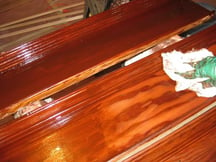
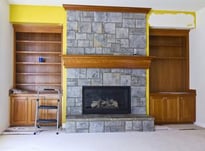 One of the most common choices to go with, varnish provides a protective glossy overcoat. It comes in stained colors or clear. You can choose from water based or oil based and a small quantity can go a long way. The best part about varnish is that you can use it on wood both inside and outside of the home. Varnish can be very flammable so it is best to keep it away from open flames.
One of the most common choices to go with, varnish provides a protective glossy overcoat. It comes in stained colors or clear. You can choose from water based or oil based and a small quantity can go a long way. The best part about varnish is that you can use it on wood both inside and outside of the home. Varnish can be very flammable so it is best to keep it away from open flames.
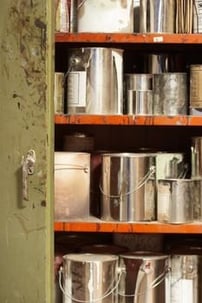 Stay away from safflower oil and carnauba oil, since both are not highly rated for finishing stained wood.
Stay away from safflower oil and carnauba oil, since both are not highly rated for finishing stained wood. Guest Blogger: Tom Masters has been working in the construction industry since he was a child. Lately he prefers the business end and writing about the trade. He is currently working with
Guest Blogger: Tom Masters has been working in the construction industry since he was a child. Lately he prefers the business end and writing about the trade. He is currently working with 
 Making an Introduction
Making an Introduction If you've ever played the game "The Sims," you know that maintaining relationships can sometimes be harder than starting them. And like dating, you often have to take the initiative to keep the relationship strong. Treating clients or close professionals to
If you've ever played the game "The Sims," you know that maintaining relationships can sometimes be harder than starting them. And like dating, you often have to take the initiative to keep the relationship strong. Treating clients or close professionals to 
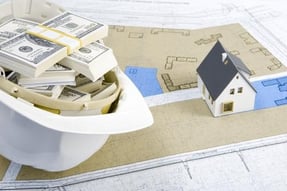 As 2017 dawns, the outlook for the construction industry is optimistic. Despite setbacks experienced during the Great Recession, the industry is set to
As 2017 dawns, the outlook for the construction industry is optimistic. Despite setbacks experienced during the Great Recession, the industry is set to  To achieve this level of gross profit margin, one fundamental strategy is increasing your revenue. The key to increasing your revenue is improving your marketing and sales. One of the most efficient ways to improve your marketing is by
To achieve this level of gross profit margin, one fundamental strategy is increasing your revenue. The key to increasing your revenue is improving your marketing and sales. One of the most efficient ways to improve your marketing is by  Another effective strategy to lower job costs is automation. Automation can help you lower the costs of materials by helping you plan more precisely to avoid unnecessary waste. J.E. Dunn has partnered with Autodesk and Microsoft to develop
Another effective strategy to lower job costs is automation. Automation can help you lower the costs of materials by helping you plan more precisely to avoid unnecessary waste. J.E. Dunn has partnered with Autodesk and Microsoft to develop  Outsourcing is another proven way to cut labor costs both in the field as well as the office.
Outsourcing is another proven way to cut labor costs both in the field as well as the office.  The layout of your workplace is extremely important, because the wrong layout can restrict staff and hinder productivity, while the right layout can help your team to carry out their tasks more effectively and boost productivity and even creativity. For this reason, it is important that you plan your layout carefully and make the right choices.
The layout of your workplace is extremely important, because the wrong layout can restrict staff and hinder productivity, while the right layout can help your team to carry out their tasks more effectively and boost productivity and even creativity. For this reason, it is important that you plan your layout carefully and make the right choices.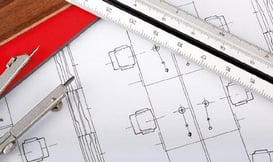

 Guest blogger: Reno Macri is a founder and director of a leading exhibition and event company Enigma Visual Solutions, specializing in retail designs, interiors, graphic productions, signage systems, event branding, modular exhibition stands design, office space planning and much more. He specializes in experiential marketing and event productions. He enjoys sharing his thoughts on upcoming marketing ideas and design trends. Feel free to follow him on twitter.
Guest blogger: Reno Macri is a founder and director of a leading exhibition and event company Enigma Visual Solutions, specializing in retail designs, interiors, graphic productions, signage systems, event branding, modular exhibition stands design, office space planning and much more. He specializes in experiential marketing and event productions. He enjoys sharing his thoughts on upcoming marketing ideas and design trends. Feel free to follow him on twitter. Small business owners usually cringe at the thought of tax season. They are busy enough with their daily operations that they don’t want to spend all of the time and energy getting ready to file on time. They also may dread of thought of paying more in taxes than they feel they should. While small business owners cannot avoid taxes altogether (even though they wish they could), they can take some steps now to avoid the hassles that typically come at tax time.
Small business owners usually cringe at the thought of tax season. They are busy enough with their daily operations that they don’t want to spend all of the time and energy getting ready to file on time. They also may dread of thought of paying more in taxes than they feel they should. While small business owners cannot avoid taxes altogether (even though they wish they could), they can take some steps now to avoid the hassles that typically come at tax time. Even if you are diligent about keeping receipts, a
Even if you are diligent about keeping receipts, a  Categorizing expenses
Categorizing expenses
 LED or light-emitting diode has revolutionized light installations. This type of
LED or light-emitting diode has revolutionized light installations. This type of  Then you will need to look at the LPW or lumens per watt. Put simply, this is the amount of lumens produced for every watt that is used. The higher the number, the better it is in order to match the CCT or the correlated temperature (measurement of coolness or warmth) measured in kelvins (K). It indicates whether a light is warm, neutral or cool white in appearance. Finally, you have to compare the CRI, with a higher rating a better choice, that is, greater than 80 is rated as good and greater than 90, very good.
Then you will need to look at the LPW or lumens per watt. Put simply, this is the amount of lumens produced for every watt that is used. The higher the number, the better it is in order to match the CCT or the correlated temperature (measurement of coolness or warmth) measured in kelvins (K). It indicates whether a light is warm, neutral or cool white in appearance. Finally, you have to compare the CRI, with a higher rating a better choice, that is, greater than 80 is rated as good and greater than 90, very good. Though going above and beyond with the project at hand is usually the No. 1 priority for contractors, creating and cultivating client relationships follows closely behind in position No. 2. Any business owner and manager knows that building and maintaining great relationships with clients — otherwise known as relationship marketing — is key to a company’s success. Many companies, however, do not employ a dedicated customer relationship manager (CRM). But that doesn’t mean relationship marketing should be pushed to the wayside. We’ve gathered four tips on how you can help cultivate positive relationships with clients right now:
Though going above and beyond with the project at hand is usually the No. 1 priority for contractors, creating and cultivating client relationships follows closely behind in position No. 2. Any business owner and manager knows that building and maintaining great relationships with clients — otherwise known as relationship marketing — is key to a company’s success. Many companies, however, do not employ a dedicated customer relationship manager (CRM). But that doesn’t mean relationship marketing should be pushed to the wayside. We’ve gathered four tips on how you can help cultivate positive relationships with clients right now: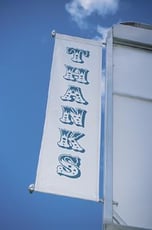 Another best practice is to treat every client like your
Another best practice is to treat every client like your 






